I thought I would begin with some news and then turn to the planning for the exhibition at Eastbridge Hospital on ‘Kentish Saints and Martyrs’ in late August/early September 2020.
As you may have gathered 2020 is a major anniversary for many things in addition to Thomas Becket, and among these it is a century since the establishment of what was initially the Canterbury Archaeological Society, but which several years ago was changed to the Canterbury Historical and Archaeological Society [CHAS]. To mark this, CHAS has teamed up with the Centre and we will be holding a joint conference in February 2021. As it will be after Becket 2020, which as well as marking Becket’s murder (1170) will highlight his Translation (1220), the Centre/CHAS conference will focus on significant Canterbury events each century from 1320 to 2020. Plans are at an early stage but having had a meeting this week with the chairman of CHAS, I hope to be able to announce the date in February very shortly and maybe the names of some, at least, of the eight speakers. This is an exciting venture and I’ll keep you posted as things develop.
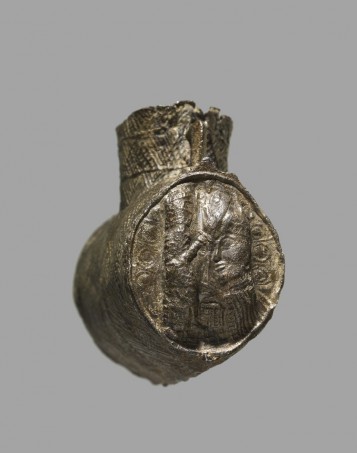
So to the exhibition, and I met up with Stephanie Barnes, a taught Masters MEMS student, and Dr Diane Heath yesterday (Wednesday) to think about how we might tackle the issue of engaging with a potentially diverse audience at Eastbridge. Having put on a very successful exhibition on ‘Medieval Faversham’ in that town a couple of summers ago, we would like to repeat that success nearer to home. We will use as our base line the six talks in various parish churches that highlight various aspects of the cult of saints and without duplicating the information, we will adopt a complementary thematic approach for our pop-up banners or similar. For the talks, please see: https://blogs.canterbury.ac.uk/kenthistory/kentish-saints-using-archaeology-texts-and-material-culture/
This is all very exciting and Diane is determined that medieval animals will feature somewhere, whether it is the falcon saved by St Thomas, or a starling – or is it a chough? (and there were also a couple of pigs). The Thanet deer [hind] will probably be in evidence, too, whereby the isle was divided in the famous story for the benefit of the monastery that Domne Eafe, the daughter of King Eormenred of Kent, wished to establish following the murder of her two brothers by their cousin (or his chief minister). The land (48 hides) to be given to Domne Eafe by her contrite cousin as a way to end the family feud and any further bloodshed. This monastery of Minster-in-Thanet had as its first abbess Domme Eafe and she was followed by Mildred (Mildrith), her daughter, first as a nun and later as the second abbess – who became St Mildred.
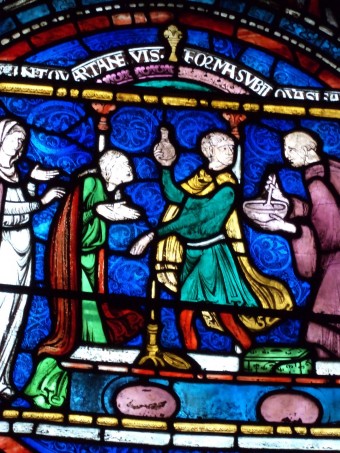
From the Canterbury perspective, this gets even more interesting in the 11th and 13th centuries because the relics of St Mildred became a bone of contention (sorry) between St Augustine’s Abbey, Lanfranc’s guild of priests who were followed by the Augustinian canons of St Gregory’s Priory, and Christ Church Priory. In 1030 St Augustine’s Abbey claimed the relics of St Mildred as part of its annexing of the monastic estates which had belonged to the house at Minster-in-Thanet. The abbot at St Augustine’s met considerable opposition from the Thanet islanders who did not wish to lose ‘their’ saint, but having the king’s backing the abbot was able to translate the relics to Canterbury, though not before he had promised to celebrate her feast at St Augustine’s on the same scale as that of the abbey’s most important saints and to ensure that a mass was celebrated daily over her relics. This promise was apparently kept, at least after 1091, because even though her relics spent some time in the north porticus, after the rebuilding at the abbey church her relics, along with those of several Anglo-Saxon archbishops, were translated to altars in the new choir. According to later sources, the altar of St Mildred was the fourth on the north side from that of St Augustine, placing it in the chapel of the Holy Innocents.
However, others had their eyes on these female Anglo-Saxon royal saints, and, according to chronicle evidence, in 1085 ‘Archbishop Lanfranc had the body of St Eadburg at Lyminge (another early Anglo-Saxon monastery) translated to St Gregory’s’, but within four years the clerks were claiming that they had the relics of St Eadburg of Minster-in-Thanet and her predecessor, St Mildred. In order to highlight their claim to St Mildred, the clerks kept her feast day (13 July) with great ceremony.
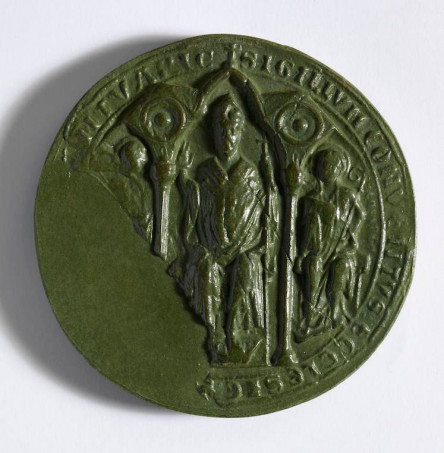
Lanfranc’s apparently greater enthusiasm in later life for his saintly Anglo-Saxon predecessors may, therefore, have extended to these female royal saints. In addition, the resulting scribal ‘war’ between monks at Christ Church Priory and St Augustine’s over the fate of St Mildred’s relics – Osbern seemingly the monk at Christ Church cited by Goscelin as having ‘defamed St Mildreth by arguing that St Gregory’s Priory in Canterbury, not St Augustine’s Abbey, possessed Mildreth’s genuine relics’ – is an interesting development.
As I wrote in 2012, things had not really been resolved when the canons arrived in 1133, for they entered what was already a fairly-congested spiritual landscape and this space would become even more crowded over the next one hundred and fifty years. At the heart of this conflict was the resting place of St Mildred’s relics, for as we have seen both houses claimed that they had the body of this Anglo-Saxon saint, and it is the canons’ creative use of their claim through the production of a foundation charter, its inclusion in their cartulary, and the making of a seal that I focused on in the article.
Being unable to produce a legend about the foundation of Lanfranc’s religious house, the canons were able to put forward a foundation charter, or at least they had a copy of this ‘charter’ as the first entry in their cartulary which was produced in the early 13th century. According to the ‘foundation charter’, Lanfranc had established St Gregory’s for his soul and that of King William, the house receiving the relics of the virgin saints St Eadburg and St Mildred, and the body of Ethelburg, queen of Northumbria, who was said to be St Eadburg’s sister, the relics having been in the church of Lyminge from ancient times. The ‘charter’ also mentions the relics of certain, unnamed Anglo-Saxon archbishops that came to St Gregory’s from Canterbury Cathedral to bring honour on the new foundation.
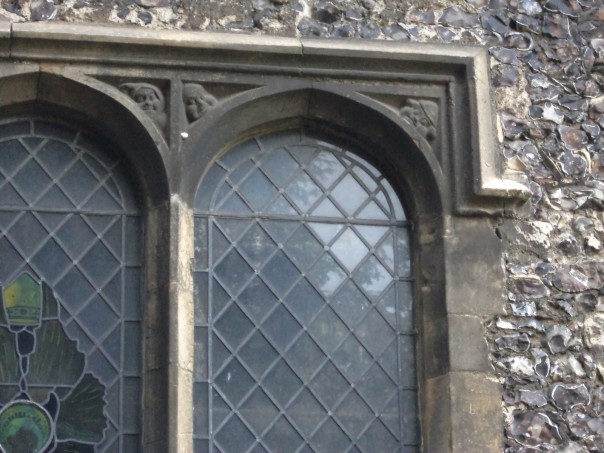
Two other events had taken place just prior to the latest date of c.1240 for the cartulary. Firstly, in 1224, according to a Canterbury chronicle fragment, the ‘elevation’ of certain relics took place at St Gregory’s Priory, and the relics involved were those of the abbesses St Eadburg and St Mildred, and Queen Aelburg (sic) of Northumbria, the daughter of King Ethelbert. Very soon after the canons replaced their house’s seal. The new seal has a more complex design, including Lanfranc seated on a throne with mitre and pall, and on either side of him are smaller niches in which saints sit on thrones, that on his right being St Eadburg, that on his left St Mildred.
If we put these three events together, and remembering what had happened in Canterbury Cathedral in 1220, things become fascinating. For Becket’s translation had been witnessed by the king, members of the aristocracy, prelates, monks, and probably the prior and canons of St Gregory’s, who over the next couple of years must have been aware of the growth in the number of pilgrims and the financial implications for the Christ Church monks. Furthermore, they were presumably aware of the decrees of the Fourth Lateran Council of 1215, which included the prohibition of venerating relics not authenticated by the Roman church. Taking these points together, for the canons the evidence of the financial advantages of reviving their saints’ cults might have been overwhelming but it had to be done in accordance with the papal directive to be successful. This was especially true because the abbot at St Augustine’s, their rival in terms of St Mildred, was intending to embark on an ambitious rebuilding scheme, which was likely to draw potential funds away from St Gregory’s that could not match the prestige of the great abbey.
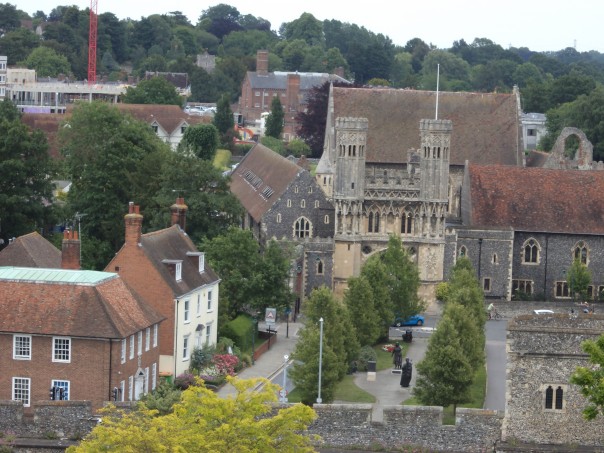
Even if only some of these factors were significant, they may help to explain the canons’ actions. In terms of the relics themselves those of St Mildred were presumably the most valuable because, even though it is difficult to gauge how important she was locally and regionally, there were three parish churches dedicated to her in the Canterbury diocese, including, of course, one in Canterbury not far from the castle that was held by St Augustine’s. Also, it is worth noting that Mildred remained relatively popular as a female name in Kent during the Middle Ages. Although it is impossible to know where her altar (and chapel) would have been located in the priory’s church, it seems highly likely it would have been at/near the east end; that is, the area reconstructed again in the early thirteenth century after the second fire at the priory. Consequently, the ‘elevation’ of 1224, the (re)telling of the house’s foundation, and probably the celebration of her feast day re-established St Gregory’s as a place of veneration for St Mildred, a position that was enhanced by linking her to St Eadburg, as well as Queen Ethelburg, because it drew attention to the connections between the two ancient royal monasteries of Minster-in-Thanet and Lyminge, and the archiepiscopal foundation of St Gregory’s.
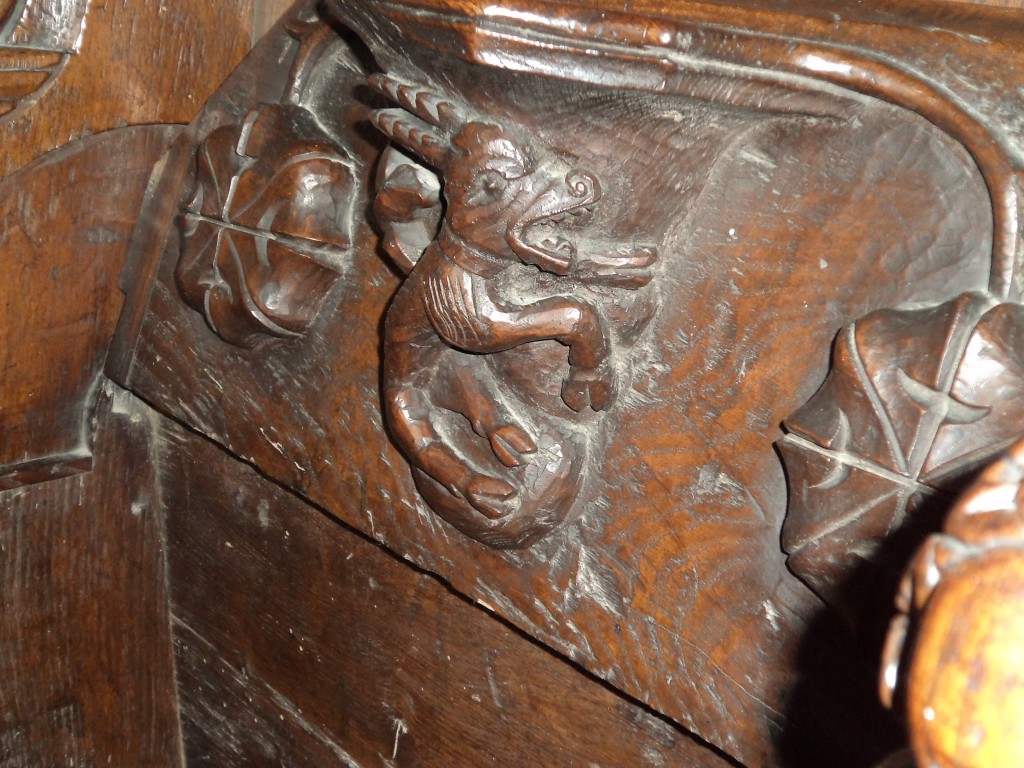
Of course, how far such activities by the canons can be seen as ‘successful’ is a moot point but in terms of building work there, the second quarter of the thirteenth century, the ‘elevation’ in 1224 and associated activities were a significant part of the initiative to provide their saints with suitable resting places in the twice-rebuilt priory church. Moreover, the canons continued to maintain that they held St Mildred’s relics into the fifteenth century, though whether such claims furthered their building plans in the later period is far from clear.
Now today I have largely concentrated on the later controversies associated with just one of Canterbury’s saints, but I hope you can see that these individuals are as fascinating post mortem as in life, and, in our exhibition, we hope you will find ‘our’ saints and martyrs equally interesting.
 Centre for Kent History and Heritage
Centre for Kent History and Heritage Sheila Sweetinburgh
Sheila Sweetinburgh 2229
2229

